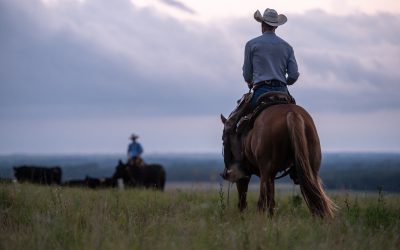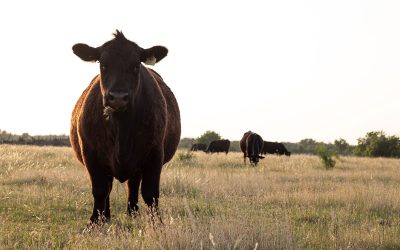
Market at weaning like a feeder at finishing
June 3, 2011
I love meeting and learning from new people, so this week was a real treat for me. I was on a “story trip” through southern Iowa where got to visit a handful of cattlemen with very different operations and very different stories of how they got where they are today.
For one, his father’s dairy barn fire and development dreams led him to the land he and his cattle have called home for 31 years.
Another father-son combo, share a dream of farming and raising cattle together. Sam Mendenhall, the 6th generation farmer, is sending his son (the 7th generation) to his alma mater (Iowa State) this fall, with hopes he continues his involvement after college.
At the last stop, this feeder says he was just a kid out of college, looking for a job when he landed one that fit. And stuck. He’s been at Gregory Feedlot for more than three decades.
These Iowa cattlemen have unique goals and management strategies, but they do have more in common than their geography: They all use grid marketing.
Why?
- Randy Conrad says he does it “so I get paid for what my cattle are worth and not what a packer thinks they’re going to be worth.”
- The Mendenhalls, who feed both their own and purchased cattle, grid those from known genetics to increase profitability. If they don’t know the cattle, then they’re sold in the beef to reduce risk.
- David Trowbridge says their focus on quality and ability to get carcass data back to producers is their niche as a small feedyard. Grid marketing just fits that business plan and their customer base demands it. (Not to mention all those premiums.)
Aiding in a quality focus, getting paid for what your cattle are worth, increasing profitability—I’d imagine these all sounds like good things to you, right? But cow-calf producers often say, “Yeah, but what if we sell at weaning?”
Well, there is this idea of grid marketing for your feeder calves. Haven’t heard of it? To be honest, it hasn’t caught on in a big way out in the country, but that doesn’t mean you can’t be in the first wave of the trendsetters. (It wasn’t but a few short decades ago that grid marketing was new to the cattle feeding world, too.)
Here’s an excerpt from an article I wrote about the concept a couple years ago:
“Producers could sell their calves and still capture some later premiums based on how they feed, how efficient they are, their health and ultimately their carcass merit,” explains CAB’s Mark McCully.
Building on the already-popular carcass grids available to cattle feeders, the grid for calves could pay 95% of a base price up front, for example. Over time, there could be incremental discounts and premiums for health, average daily gain, feed conversion and CAB brand acceptance.
“Those who would benefit most from a system like this are the producers who have truly built a value-added calf from the genetics on up,” he says. “These calves would be well above average both in their ability to gain and grade well.”
Of course, you have to find a feeder who is willing to work with you and you better be confident that your calves really are better than average. So what do you think? Is it too “out there” or is it an idea you’d try?
May your bottom line be filled with black ink,
~Miranda
PS–If you want to hear “the rest of the story” on those three farms/feedlots above, you’ll have to check out your fall editions of the Angus Journal and Angus Beef Bulletin, where the full features will likely appear.
You may also like
Progress from small steps
Every day is a chance to learn and get better. Thousands of others like my new friends in Alabama are taking steps to meet the shifts in consumer demand, and to know more. Small steps in the right direction can start now. Even if it’s just recording a snapshot of where you are today, a benchmark for tomorrow.
Not perfect, but working to get better
The CAB Cattleman Connection team heard its name called more than once in the virtual ceremonies, and each time came a sense of personal accomplishment, but even better: confirmation that we’re getting better at our craft. I hope that means we’re doing a better job for you.
Beefed up findings
Frank Mitloehner presents his findings on the animal ag sector’s impact on global warming. He explains how cattle counterbalance other fossil fuel sectors, proving that cattle are a solution and not a threat.



